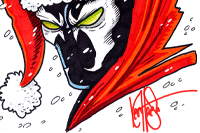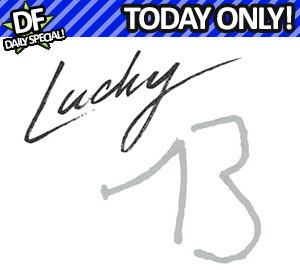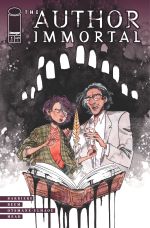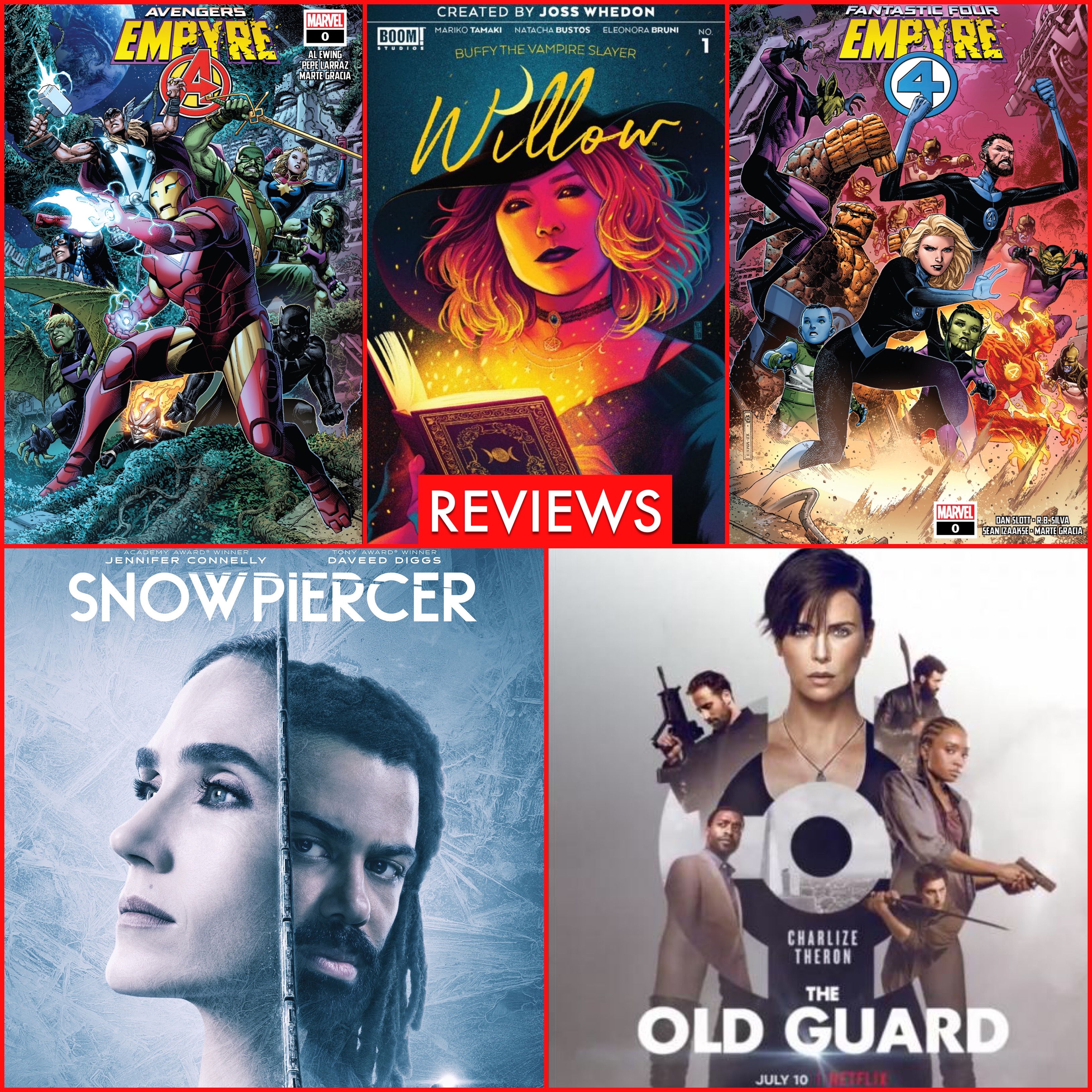|
 |
WAITING
FOR TOMMY: DAVID HINE
By
Richard Johnston
RICHARD:
As do we all (BTW, Virgin Megastores are doing a box set of
Crumb and American Splendor right now, for cheapo money. Plug
over). David, you disappeared on us for a while. Some Judge
Dredds, Zoids, Strange Embrace, Care Bears, you had quite
an eclectic base of work. Then, nothing for years. Now, suddenly,
a reprint collection of Strange Embrace from Active Images
and District X. What brought you back in? How have things
changed in the industry? Do you reckon you'll stick around
for a while?
DAVID: Acch! I spent years trying to draw comics. I
never managed to achieve that spontaneous flow from brain
to paper that the best artists do so effortlessly. The greatest
artist was Hugo Pratt - his drawing was like handwriting -
spontaneous and totally personal. My style changed with every
strip I did because I was always wrestling with the mechanics
of drawing. The only thing I was really happy with was 'Strange
Embrace'. That came out at a time when the backlash against
black-and-white independents was in full swing. It got lost
in the tide of crap and I gave up hope of ever being able
to make a living doing the comics I really wanted to do, so
I walked away in disgust. Having Strange Embrace published
in the graphic novel format I had always intended for it was
irresistible, but I really didn't intend to return to comics
until Joe Quesada invited me to do something for Marvel. I'm
more surprised than anyone to end up writing what is ostensibly
an X-book, but I'm getting a real kick out of it. It's amazing
to actually have an audience that I can't count on my fingers!
The industry
has changed a lot. Some of the dead wood is gone. There is
probably even more diversity than ever in the independents
and the quality of art and writing is much higher. The audience
for comics appears, on the face of it, to be stagnant, but
with the increasing number of graphic novels, collections
and manga in a range of outlets, there may be more people
reading comics than we think.
I'm optimistic
and I plan to stick around this time.
RICHARD:
How does writing District X compare to working on the Care
Bears anyway?
DAVID: Jeez, I miss those little fellers. I still get
a fuzzy, squidgy feeling whenever I think about them.
RICHARD:
So are you definitely going to become one of these writer/artists
who gives up the art section and just concentrates on the
writing? Bendis, Austen and some hack called Rich Johnston
come to mind?
DAVID: No more drawing. except possibly a follow-up
to 'Strange Embrace'. Definitely no regular strip. Too painful.
I need my sleep.
RICHARD:
And how does this change the stories you write? Are you more
challenging or less in the scripts you send to the artist,
than if you were drawing?
DAVID: Of course, having been an artist I keep that
very much in mind when I'm writing scripts. I actually know
what a bastard I'm being. I'm still wracking my brains to
work out how to fit that classic scene "Six hundred horsemen
appear over the hill" into District X. (My apologies to David
Yardin. I know I've made things tough for him but I do believe
that what doesn't kill you makes you strong. er, is that an
axe I see in your hand David?)
RICHARD:
Oh yes, and oh long, on it's blade and dudgeon, gouts of blood,
that was not so before. Excellent. Well, what else? Bishop
is a central sci-fi character of Marvel. He seems to be placed
in more of a police procedural mutant comic. Are you playing
with that jarring of genres, as well as the whole mutant thing?
DAVID: I'm not thinking in terms of genre, but I've
always liked crime/noir, horror, science fiction and anything
with mutants so it seems right that there are elements of
all those genres in DX.
Pages:
1 | 2
| 3 Continued
Here...
|
 |






